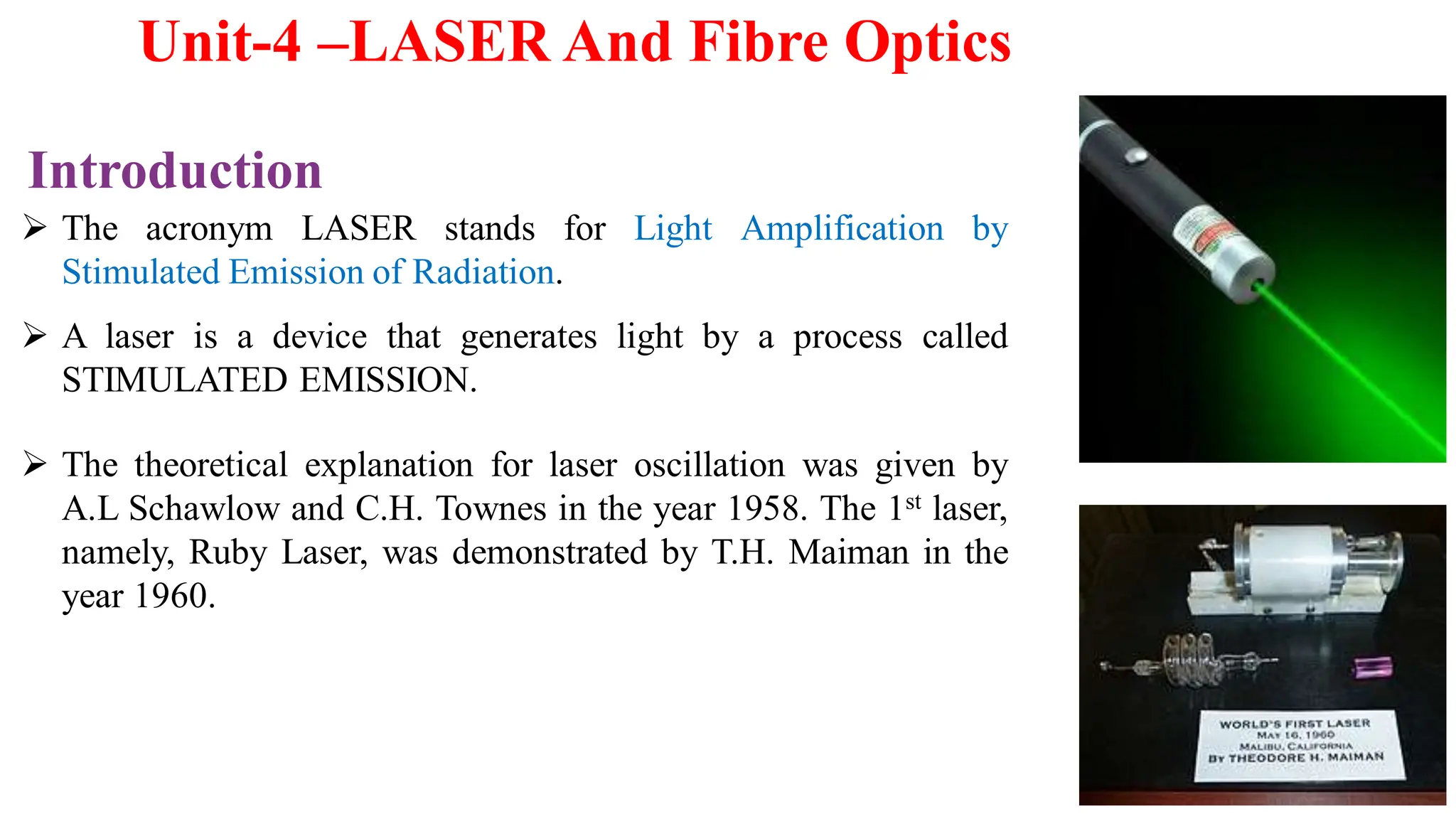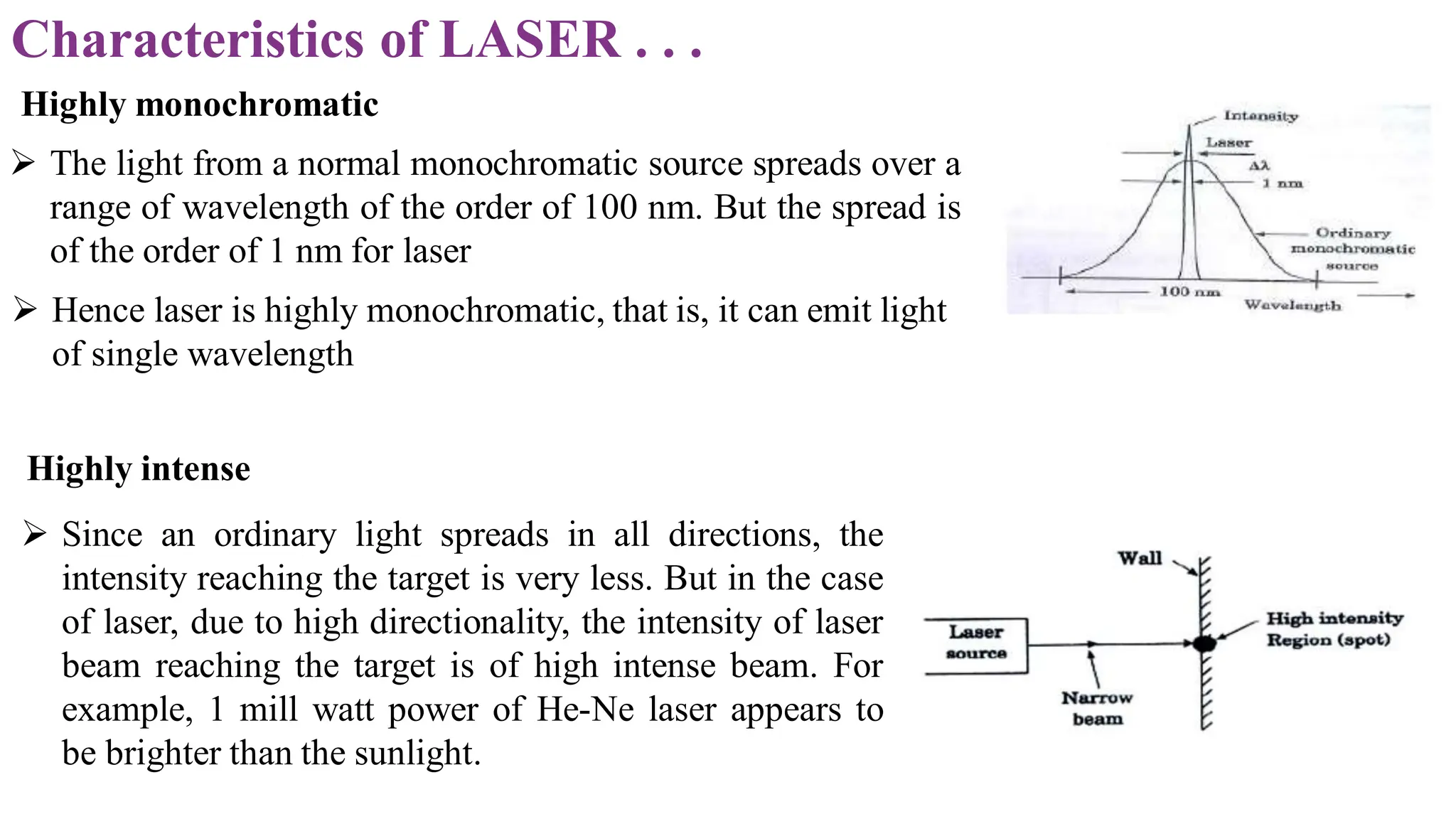Lasers, which stand for Light Amplification by Stimulated Emission of Radiation, are devices that generate light through stimulated emission, and possess unique properties such as high directionality, monochromaticity, intensity, and coherence. The document outlines the principles of laser operation including population inversion and various pumping mechanisms, as well as applications in medicine, communication, industry, science, and military. Additionally, it describes the working principle of optical fibers based on total internal reflection and their role in communication systems.































